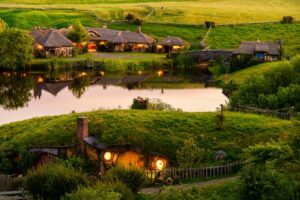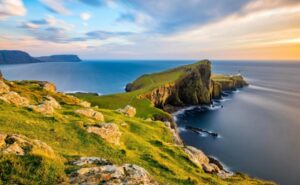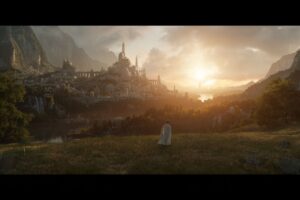Twenty years ago, as J.R.R. Tolkien book purists waged an online war with folks excited for Peter Jackson’s then-upcoming adaptation of The Lord Of The Rings, who would have guessed that someday Jackson’s movies would have purists of their own? Sadly, with the recent revamp of Tolkien fan-forums like TheOneRing.com, it’s rather difficult these days to find exact discussions and posts from, say, September 19th, 2001, but I can assure you that the arguments on those fan-forums back then played out much like the arguments happening nowadays over the contents of Amazon’s new series.
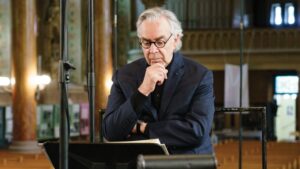
But the tables have turned. Amazon hasn’t done much marketing for The Lord Of The Rings just yet, but what little they have done has been designed to appeal to fans of Tolkien’s books…specifically his lesser-known, posthumously-published books. That screenshot they posted last month had all of Silmarillion twitter freaking out and urgently debating the light-source in the image (long story). But I can imagine it left some hardcore fans of Peter Jackson’s movies who haven’t necessarily read The Lord Of The Rings, much less The Silmarillion, a little confused or even underwhelmed.
I definitely don’t think Amazon helped remedy this problem by announcing that The Lord Of The Rings would be moving production on season two to the United Kingdom shortly thereafter. For fans of Peter Jackson’s movies (specifically fans who haven’t read the books, but also kind of everyone), that was another blow. New Zealand and Middle-earth have become intertwined in the public consciousness to the point where they’re nearly synonymous, for better or worse. Fans introduced to Tolkien’s vibrant fantasy world through the movies were disappointed, and it’s understandable why, even though there are upsides to filming in the UK (one being that it was Tolkien’s home-country).
All of that brings us to today’s news, which fell upon my ears like the echo of all the joys I’d ever known (bonus points if you know which chapter of The Lord Of The Rings I’m paraphrasing there). Howard Shore, the composer for both of Peter Jackson’s Middle-earth trilogies, is in talks to return to the world he helped define through his phenomenal music. It hasn’t been finalized just yet, according to Deadline, but the odds seem pretty good that Shore will get to craft new soundscapes, themes, and iconic leitmotifs for the Second Age of Middle-earth.

It’s the kind of news that makes everyone happy, or at least nearly everyone. Howard Shore is a genius, and his Oscar-winning score for The Lord Of The Rings is widely regarded as one of the greatest in film history. If he boards Amazon’s series, we can be certain that the kingdoms of Númenor, Lindon, Eregion, and Khazad-dûm at its height will each have their own rich and distinctive sound, and that Shore will choose from among the most unique vocal talents of our time to back up his work with original songs (I’m just gonna namedrop Tolkien-inspired singer/songwriter Oonagh here and hope that someone at Amazon reads my blog-posts).
But best of all (at least from a business perspective), this news makes fans of Peter Jackson’s movies happy. And getting them onboard with the series is going to be crucial for Amazon if they want to have a hit. I’m not advocating for Howard Shore to simply copy-and-paste his Fellowship and Shire themes into the soundtrack for Amazon’s The Lord Of The Rings (although I’d love to hear echoes of those and other themes at appropriate moments), but I think Peter Jackson fans want a sense of continuity between the movies and the series, and this is a great way to achieve that.
And what’s even more interesting about all of this is that according to Fellowship Of Fans, Howard Shore will be joined on the series by another great composer – Bear McCreary. McCreary’s name might be less well-known to some folks, but the Emmy Award and BAFTA Award winning composer has established his own very unique style over the past decade or so, working across several different mediums and genres, on TV shows like Black Sails, Outlander, The Walking Dead, and my own personal favorite, Agents Of S.H.I.E.L.D., dozens of films including the Cloverfield sci-fi/horror franchise, and the two most recent God Of War video games inspired by Norse mythology.
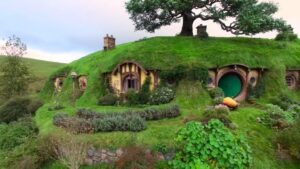
Assuming that all of this comes to pass, I foresee a lot of Emmy Awards in Howard Shore and Bear McCreary’s futures, and I can’t wait to hear some of their work soon. Who knows? Maybe…just maybe…a first trailer or teaser is already being edited together, and Amazon wants Shore’s music to really sell it for general audiences. I know that would sell it for me.
What do you think? Which composer’s work are you most excited to hear in The Lord Of The Rings? Share your own thoughts, theories, and opinions, in the comments below!



